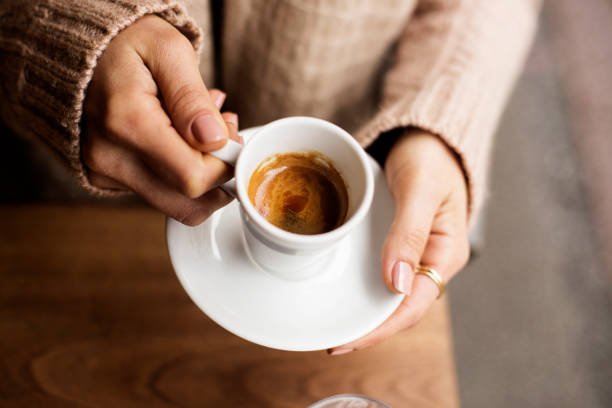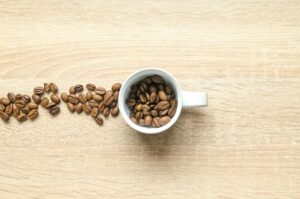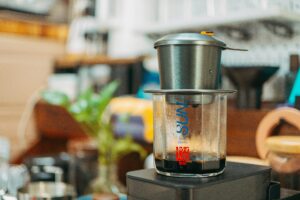For coffee enthusiasts and those needing an assured pick-me-up, understanding the caffeine content in various coffee types is a crucial piece of knowledge. How many espresso shots you’d need to match the jolt of a regular cup of coffee is a natural question, yet the answer is not as black and white as the beverages it concerns. This topic is at the heart of an age-old debate amongst coffee connoisseurs and health-conscious individuals alike, and its nuances are worth exploring. In this comprehensive exploration, we’ll not only find out the answer to this oft-debated question but also shed light on the correlation between the espresso and coffee cup in terms of caffeine.
Table of contents

Introduction to the Debate: Setting the Stage
Coffee, as a global phenomenon, has a rich history that intertwines with the very fabric of humanity. From the spiritual significance of its origins to the social and workplace customs it has inspired, there’s a lot more to our morning jolt than meets the eye. The rivalry between coffee and espresso extends beyond the cup to the caffeine they carry. This rivalry is fueled by the perception that espresso is a more potent jolt than a regular coffee. But is this just urban myth, or is there science to back it up? Today, we demystify this coffee conundrum and get to the caffeine-laced truth.
Understanding Caffeine: The Science Behind It
Caffeine is the most widely consumed psychoactive substance in the world. Found in coffee, tea, chocolate, and several other foods and drinks, it stimulates the central nervous system, making you feel more alert. But how it affects each person can differ based on tolerance, metabolism, and other factors.
How Caffeine Affects the Body
Once you imbibe caffeine, it is quickly absorbed from your digestive system into the bloodstream. From there, it travels to the liver, and is broken down into compounds that can affect many organs. The impact varies, but commonly, caffeine can increase heart rate, boost alertness, and temporarily ward off drowsiness.
Differences in Caffeine Content Between Coffee and Espresso
Coffee generally provides more caffeine per ounce than espresso, but because a typical espresso serving is small, the concentration of caffeine it contains can be significantly higher. More on this as we go deeper into the numbers.
Factors that Impact Caffeine Levels
The caffeine content in any given coffee or espresso shot is not a fixed number. It can vary depending on the type of beans used, the roast, grind size, and brewing method. Understanding these factors can help predict and control your caffeine intake.
Defining a Cup: What is a Standard Serving Size?
When it comes to discussing caffeine, the concept of ‘a cup of coffee’ can be surprisingly ambiguous. The definition of a “cup” of coffee can be subject to interpretation and measurement variance. What is considered a “standard” size has evolved over time as well, with some historical quirks worth mentioning.
How Coffee Measurements Have Evolved Over Time
In the 1800s, the coffee ‘cup’ was more folklore than standard, as diners at various establishments could expect a different volume. In 1950, the United States determined a standard ‘cup’ to be 6 ounces, but since then, 8 ounces has commonly usurped this as the average ‘cup’ size.
Why Standardization is Important
The art of brewing and the science of coffee-making can only be fully appreciated when there is an agreed-upon standard. Without standardization, discussions around caffeine content remain blurry, with some claiming there could be as little as 50mg of caffeine in a cup of coffee and others saying as much as 100mg or more.
Espresso Shots vs. Cups of Coffee: A Caffeine Comparison
An espresso shot, typically 1 ounce, carries between 30-50mg of caffeine, while an 8-ounce cup of drip brewed coffee can contain 95mg on average, with some types exceeding 200mg. The numbers suggest that in terms of caffeine concentration, the competition is indeed close.
Average Caffeine Content in an Espresso Shot
A standard serving of espresso, with its strong, concentrated flavor, is also dense in terms of caffeine, packing quite a punch into its diminutive volume.
Caffeine Content in a Standard Cup of Coffee
The caffeine in a ‘cup’ of coffee, taking its evolving size into account, might contain nearly twice the caffeine of an espresso shot, but over many more ounces.
Comparing the Caffeine Levels in Various Coffee Drinks
When comparing various coffee-based beverages, brew time and method matter. A French press or percolator coffee may surprise you with a higher caffeine count than that home-pulled shot of espresso.

The Real Impact on Health: Debunking Myths and Understanding Limits
Health effects of caffeine are a frequent topic of conversation. There’s a lot of misinformation, so we’ll sift through and separate myth from fact.
Understanding Moderate Caffeine Intake
In moderation, caffeine can have benefits like improved cognitive function and boosted physical performance. However, moderation is key, with health organizations recommending a maximum of around 400mg per day.
Debunking Common Misconceptions
Caffeine doesn’t actually ‘sober you up,’ and its diuretic effects have been overestimated. Further, the idea that it’s solely responsible for coffee’s flavor isn’t entirely accurate either.
Practical Tips for Coffee Lovers
For enthusiasts or those who just need that daily dose of caffeine to function, there are ways to enjoy your coffee to the fullest without overdoing it.
Making Informed Choices About Caffeine Consumption
Whether you’re ordering at a cafe or brewing at home, knowing the caffeine content of your drink can help manage your daily intake.
Understanding Your Own Caffeine Tolerance
Tolerance to caffeine varies significantly among individuals. Keeping track of your own tolerance through observation is important for your health and wellbeing.
Tailoring Your Coffee Order to Your Needs and Preferences
If you love your daily dose of caffeine but could do without the bitterness of an espresso, a café latte or cappuccino might be a more palatable choice without sacrificing the pep.
Conclusion: The Verdict on Caffeine in Coffee vs. Espresso
While the average espresso shot contains less caffeine than a standard cup of coffee, the debate between which is stronger will always boil down to concentration versus volume. It’s not merely about how much caffeine you ingest, but how you want to experience it — in a powerful sip or a leisurely drink. Understanding this fundamental difference can lead to a more meaningful coffee experience.
In the end, it’s about knowing your brew — be it the earthy aroma of a morning drip brew or the quick hit of an afternoon espresso. With a nuanced understanding of caffeine content, you can savor your cup of choice, come coffee or espresso, knowing you’ve made the right pick.
As you traverse your coffee-drinking journey, always keep in mind the historic and scientific context that encompasses every sip. This knowledge not only helps you appreciate the art of coffee but also ensures that you’re drinking responsibly, in the way that best suits you. And remember, as the brewing methods and preferences evolve, the one constant is that undeniable connection between people and their caffeine fix.






